It is no secret that 3D printing technology has changed the game across many industries. Even a niche field like microfluidics has witnessed remarkable advancements in recent years with the development of groundbreaking innovations like lab-on-a-chip, organ-on-a-chip, point-of-care and self-testing diagnostic devices. However, with more microfluidic researchers recognizing the potential of 3D printing, especially after the peak of the COVID-19 outbreak, current 3D printer platforms now need to meet the growing requirements more than ever.
However, the existing 3D marketplace typically offers solutions for microfluidics that are repurposed from other industries and as a result there is often a gap or a complete mismatch between a researcher’s needs and a printer’s capabilities. Microfluidic devices call for printed features that are sub-100 microns and many prevailing platforms fail to provide the scale or quality necessary.
For the past 8 years, CADworks3D’s primary focus has been on filling this gap by bringing to market a complete 3D printing solution oriented towards empowering and accelerating microfluidic research. CADworks3D’s operation is twofold as a 3D printer manufacturer and 3D material developer.
A notable innovation in this domain is our ProFluidics 285D 3D printer, a cutting-edge DLP technology that enables an efficient fabrication method for microfluidic devices and supports a variety of techniques such as direct printing or PDMS replica molding.
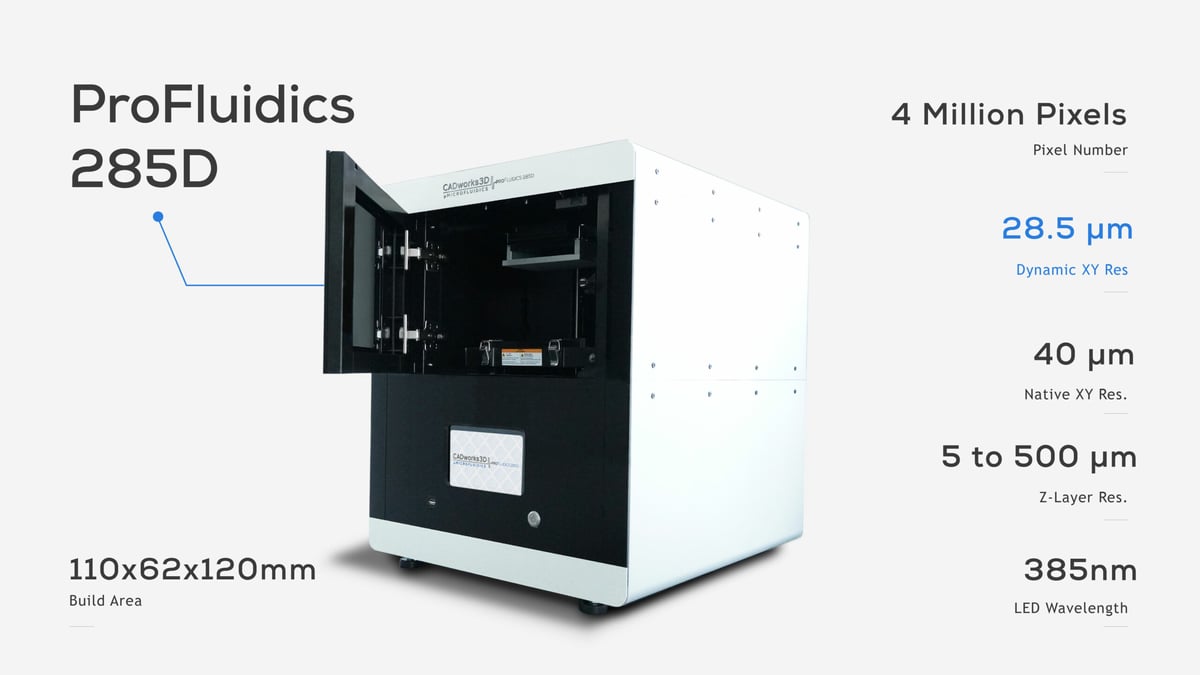
Build Smooth Curves and Shapes with the ProFluidics 285D
With its dynamic pixel advantage and a dynamic XY resolution of 28.5µm, the ProFluidics 285D offers significant improvements in accurately resolving design features – even those that bisect pixels.
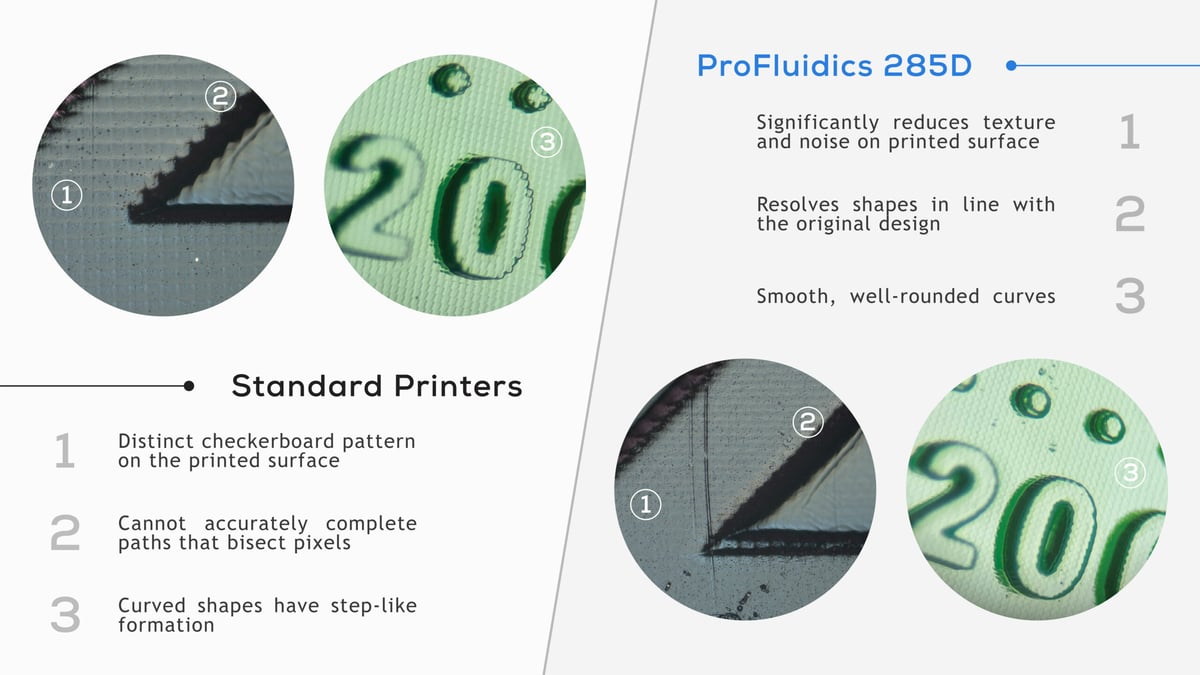
This capability allows the printer to produce prints that closely resemble the intended design and minimizes the occurrence of cube patterns and noise. With the increased resolution, the ProFluidics 285D can successfully print features with 180-degree turns, complex serpentine channels and other intricate geometries.
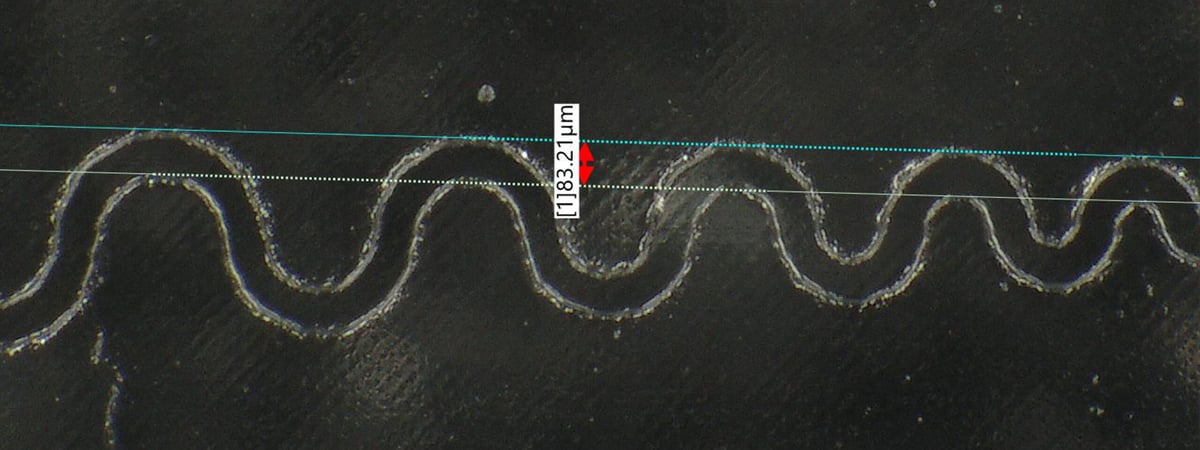
Print Stunningly Clear, Optically Transparent Devices
In conjunction with CADworks3D Clear Microfluidic Resin, the ProFluidics 285D is able to create clear devices with minimal effort. Depending on the height of the intended device, printing, cleaning and curing can be completed in just over an hour, and better still, no polishing or other treatments are required to achieve transparency. This eliminates the time-consuming and often challenging post-processing steps required by other printers, streamlining the fabrication process and reducing costs.
Viability and scale of encapsulated channels are a crucial aspect of microfluidic devices, and the ProFluidics 285D excels in this area. Fabricated in just one print job with no multi-part assembly, encapsulated channels printed in the XY can be as fine as 80μm, ensuring precise and efficient fluidic operations. The versatility of ProFluidics 285D extends beyond the X and Y directions, as it enables the printing of channels in the Z direction as well, making it ideal for complex, three-dimensional microfluidic designs such as helix coils.
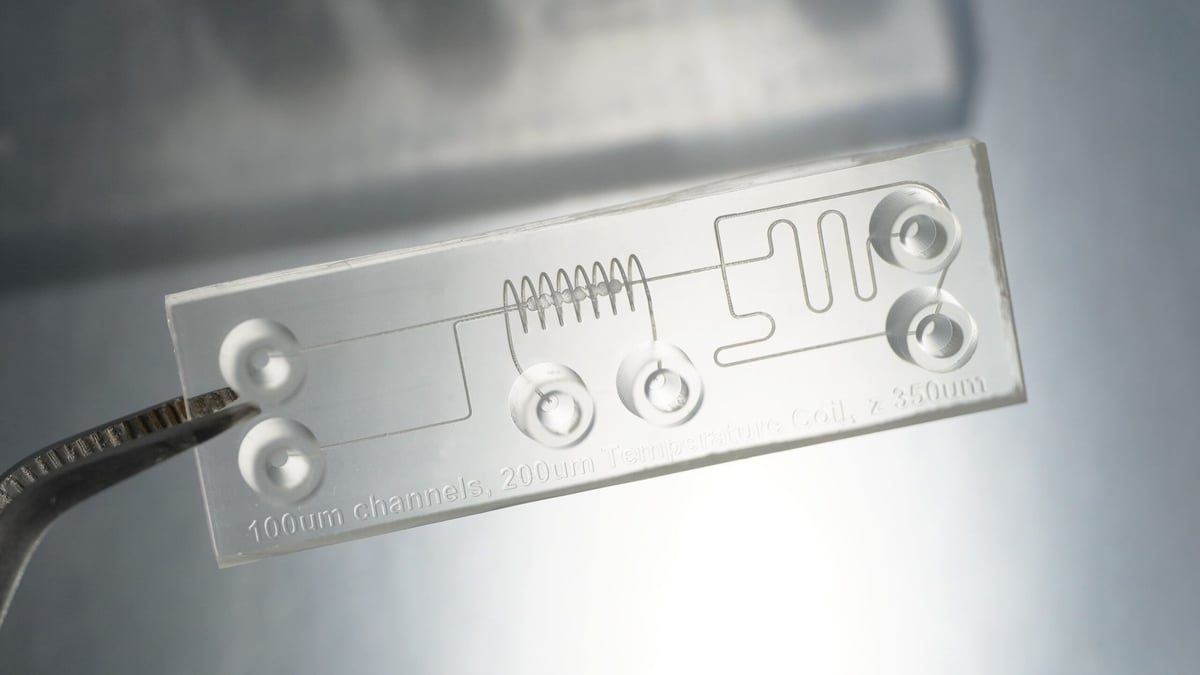
Accelerate and Streamline the Fabrication of PDMS Devices with 3D Printed Master Molds
ProFluidics 285D goes beyond direct printing with the creation of master molds for PDMS devices. The ProFluidics 285D takes soft lithography, a relatively arduous technique depending on the fabrication method of the master mold, and simplifies it by removing device fabrication from the clean room and bringing it to bench side. Print, clean and cure the master mold in just over an hour, geometry dependent, and it is ready for PDMS casting.
With CADworks3D’s Master Mold for PDMS Device Resin, printed molds can feature raised channels with a remarkable size of 50μm in the XY, and demonstrate exceptional detail and smoothness with reported Ra values of 0.18µm. Molds can be used repeatedly to produce PDMS devices with identical channel structures, allowing for batch production and consistent performance.
When it comes to a successful cast, there is no need for release agents, coatings and other pre-treatment processes. Moreover, the resulting PDMS devices retain their non-cytotoxic properties, making them suitable for various biological and biomedical applications requiring biocompatibility. With the ease of use and durability that these innovations provide, users can quickly adapt to this fabrication method and seamlessly incorporate it into their workflow.
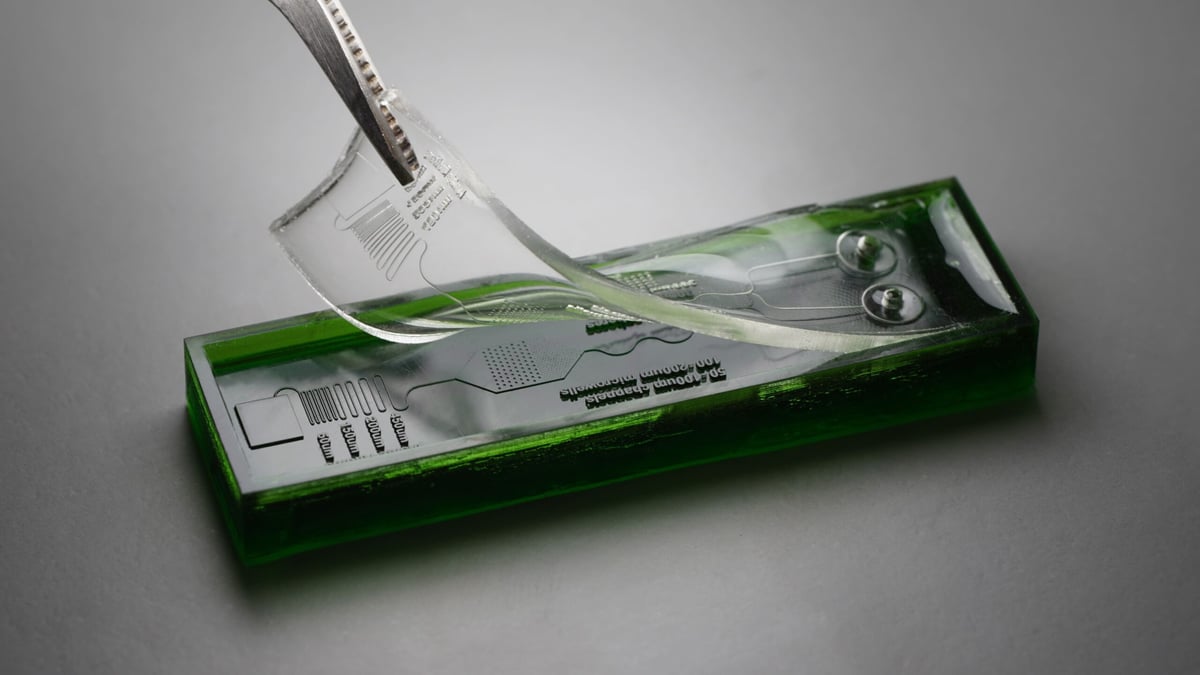
ProFluidics 285D: A Prototyping Powerhouse
While 3D printing cannot yet compete with high-volume production methods, it truly shines in circumstances where low-volume production is required, with key examples being printing one-off devices or devices still in their iterative process.
With the ability to print 100µm channels reliably, and less than this depending on the design and material, the ProFluidics 285D meets the growing demand for smaller print features. Fabricated devices exhibit improved performance, geometric accuracy, optical transparency and better laminar flow analysis. Using our material, the price of a single 5g device costs approximately USD$2.05 – USD$2.55.
Looking at these in combination, the ProFluidics 285D represents a significant leap forward for 3D printing technology in the fabrication of high resolution microfluidic devices at low cost.